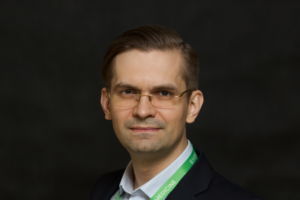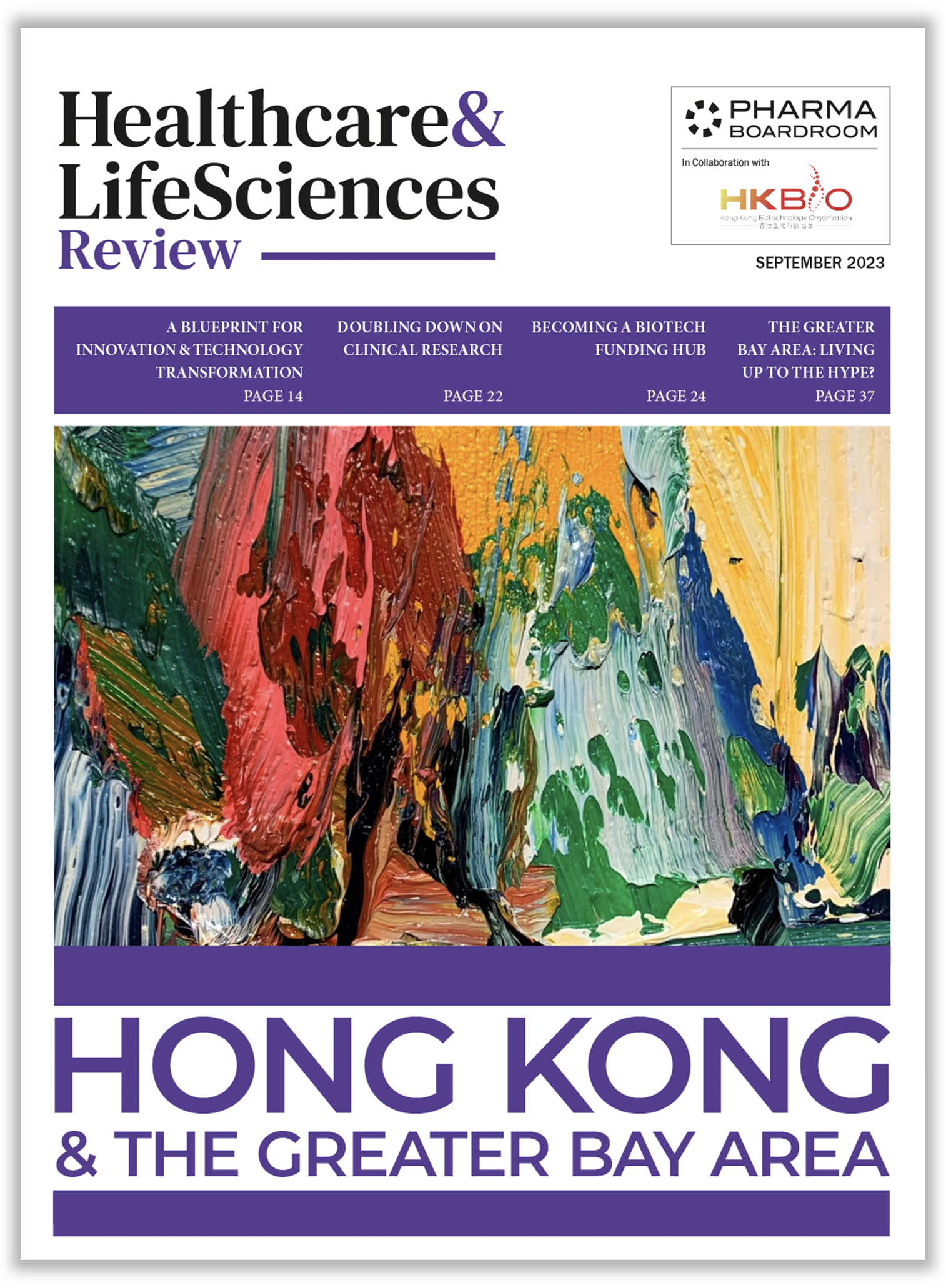Alex Zhavoronkov, CEO of Insilico Medicine, lifts the lid on the role of AI in target discovery, identification, and validation. He also offers his opinion on the future of innovative drug development in China, and the challenges of establishing a biotech company in Hong Kong.
Can you introduce Insilico Medicine to our international audience?
Insilico began as a multi amix target discovery company. In 2014 deep learning started outperforming humans in areas such as voice, image, and text recognition. Prior to this, we had already seen the writing on the wall and by 2013 started using deep neural networks to identify novel targets in the vast amount of amix data, primarily focusing on protein expression and gene expression data. This is achieved by training deep neural networks to predict a disease state, and then de convoluting this data to make it explainable. Subsequently, the protein targets responsible for a particular disease formation are identified. Insilico undertakes this process for a number of diseases and for research into ageing.
Our platform is designed to work at every stage of the pharmaceutical R&D process, which takes around ten years from beginning to end. We can join at any time within that process because our algorithm not only detects novel targets but can make certain predictions about phase I-II or II-III transitions. Our algorithms are also used in precision medicine. Thus, it covers a broad spectrum of the development cycle.
In our field we are the most published company, completing around two papers a month. This vastly outpaces our competition, publishing at an average rate of only two papers per year. I have personally published 180 papers. The number of research citations of Insilico is also growing.
Where are Insilico’s main areas of expertise?
Our main expertise is in target discovery. We have assisted in identifying novel targets for multiple companies. Our in-house pipeline also stems from target discovery expertise. I believe Insilico is most famous for generative chemistry – renowned as a chemistry specialist that can design small molecules for chosen targets.
We have also started designing and selling software. We have a software system called Pandomics which aggregates the data from clinical trials and research. This system enables the user to study any disease and compare samples from different parts of the body of those with the disease to those to samples. Furthermore, the software can also be used for identifying targets. The software uses AI (artificial intelligence) to identify and rank novel targets, based on the criteria and parameters selected by the user.
While we were very excited about our technology and its capabilities, justifying its merits to the rest of the world required a method of validation. By 2015 it became clear that findings in target discovery lack credibility without validation through real chemistry. Consequently, most of Insilico’s validation is now realised through phase II clinical trials.
When conducting this validation, there were two options: in license the identified compounds or design our own. At that time, a new technology – general adversarial networks – had only recently been launched. We decided to employ this technology to design small molecules and novel drugs. While the use of general adversarial networks by Insilico began in 2015, it wouldn’t be until 2017 that it became successful.
Our research within AI does not stop. We have new systems that can generate biological data indistinguishable from real biological data and can now imagine high-quality human data. Our AI tools can imagine a human with particular features and use parameters to increase precision. I believe creating this artificial data can be a method of getting around data privacy laws
Tell us about the talent Insilico possess who make this possible?
We currently have 115 people, of whom over 75 are specialised in AI. Moreover, the proportion of our workforce who are female is well above the industry average. We often hire our talent through global or national competitions, for example the gene hack.
In Asia and specifically in China, those working in AI are often very mobile, moving between jobs very quickly. This is why we aim to hire from Eastern Europe, or Taiwan, where the culture of company loyalty is stronger and there is less competition in the biopharma industry. We value loyalty over everything else: to be an effective company, we need to hold onto our employees for as long as possible. Fortunately, since we invest heavily in our talent, our staff turnover is very low.
What led you to relocate to Hong Kong?
Our first office was at the Emerging Technology Centre at the Johns Hopkins University in Baltimore, USA. However, observing the biotechnology revolution happening in Asia, with Asian companies looking to accelerate and develop themselves rapidly in this field, I decided that we could benefit most by relocating to Asia.
In 2018 we opened a first R&D centre in Taiwan, where we have a fully owned subsidiary. Subsequently, in 2019, we moved our headquarter to Hong Kong. We have also a presence in Shanghai.
Hong Kong was selected as our base primarily for legal reasons. When running an international company, it is ideal to be as geographically close as possible to the target market. Hong Kong provides close proximity to Mainland China, while possessing a stable legal framework which respects property rights and patent law. As the original inventor of our IP (intellectual property), this is critical for Insilico.
Biotechs are well established in China and Singapore but remain rare in other Asian countries. Regrettably, the environment in Hong Kong is less favourable to biotechs. I arrived in Hong Kong intent on building a biotech company. However, the Hong Kong government does not understand how to support their growth and development. For example, if I established a business in Singapore, I could receive a 50 percent reimbursement on my R&D expenses. In contrast, applying for a business grant in Hong Kong is a very bureaucratic process, almost analogous to applying for a bank mortgage. Similarly, the government is reticent to back innovation, favouring low-risk low-reward investments instead. Notwithstanding this, we want to break this stigma and successfully create a biotech enterprise in Hong Kong.
China is advancing its innovation footprint but continues to lag behind the USA. What will you bring to the table?
I am a believer that history is an indication of the future. Consider 5G technology, where China is the inventor. Huawei outperformed its competitors globally and had been developing this technology since the late 90s. Although they had brought less innovative products to market during that time, their innovation platform continued to accelerate. Huawei not only succeeded in bringing it to the market earlier but also outperformed its competitors.
I think we will see the same situation in the pharma industry. The market started with genetics and then moved to in-licensing. Regrettably, the current business model is employing a former big pharma executive, in license a product, take it to late-stage trials, and then list through an IPO (initial public offering).
However, the Chinese government is shrewd; they are trying to incentivise innovative development and the pursuance of higher-risk targets. The Chinese government is already doing a great job, but it would be great to see further incentives for local pharma companies to utilise AI and to search for novel targets. Target discovery, identification and validation is the highest risk area of the pharmaceutical industry. At the same time, it is the ultimate reward when a novel medicine is developed.
Switzerland is one of the best examples of how to build a pharma industry. Roche and Novartis are headquartered in Basel. Thus, one city controls 20 percent of the world’s pharma industry. To archives that you need to build a culture of excellence in the field of drug discovery. This demands an acceptance that failure will often occur and a willingness to assume the risks of new technologies.
Consequently, local Chinese companies need to begin taking greater risks and show a willingness to pursue novel targets without fear of failure. This is happening slowly but will rapidly accelerate as they grow in experience. Most of our revenue in China still comes from large multinationals. Nonetheless, there is a visible trend of the most innovative companies beginning to partner with Insilico.
Pharma is traditionally reticent to adopt sweeping change. What is your strategy to establish collaborations in the industry?
Given our reputation through our published papers, we benefit significantly from word of mouth and work with those who already know the AI landscape. We begin by looking for the most innovative people within the industry. Unfortunately, the industry is composed of many people who are risk-averse and will spend lots of time on pilots and evaluations. Nevertheless, our search usually starts from a problem that needs to be solved. We can reach out to those looking for a solution and willing to be innovative enough to test a new technology and seek out a short cut through the use of AI.
Where do you see Insilico in 5 years?
For Insilico, five years is a long time. My goal is to get some of our preclinical assets into human clinical trials. We already have a pipeline of small molecules that have been discovered and everything is new.
My main vision for the company is to create a yin and yang between our software and pipeline. We develop software for internal and external use. Other companies can acquire our tools and replicate our model. It can cover 5000 possible targets and 5000 possible diseases. We are very selective about how to provide this software. It is being launched in the summer with orders already in place.
We are also developing our own pipeline. If an AI company cannot show that its pipeline is composed of great molecules which can make it to clinical trials, the company will lose its relevance. At Insilico, we need to be willing to take risks and make big bets on our own software to find great products.







